Greg Hatza is an American jazz organist and church musician born in 1948 in Reading, Pennsylvania.
Greg Hatza is an American jazz organist and church musician born in 1948 in Reading, Pennsylvania.
Hatza started on piano at age five, and switched to organ at age fifteen. He played professionally from age sixteen, working for four years at Lenny Moore's club. He recorded two albums for Coral Records in the late 1960s with guitarist Eric Gale and drummer Grady Tate, then switched to electric keyboards in the 1970s as the organ's popularity waned. From 1974 to 1984, he studied tabla under Ustad Hamid Hossain. He later performed ragas on piano, in concert with Hamid, in the U.S., India, and Bangladesh. He returned to playing the organ in the 1990s after hearing Joey DeFrancesco, and recorded again as a leader with his ensemble, the Greg Hatza ORGANization. In 1996, he began to study Chinese classical music on the erhu, a two-stringed Chinese fiddle, under Shanghai instructor, Liang Shan Tang.
He has served as the choir director and minister of music at St. Gregory the Great Catholic Church in Baltimore. [1]

Hatza is an instructor of Qiangshan baguazhang , [2] xingyiquan, and tai chi at the Chinese Boxing Academy in Catonsville, Maryland. [3] He has over forty years of martial arts experience, including Shotokan, Shaolin kung fu, Snow Tiger, Yang-style tai chi, xingyiquan , and baguazhang (bagua).
He began his study of bagua in 1985 under Sifu Ken Fish. In 1990, he met Sifu Pak Bok Nam and has continued his studies in bagua under his tutelage. In 1999, he became a lineage disciple and licensed instructor of the Qiangshan bagua system. He also teaches tai chi. He has attended seminars with Yang Zhenduo to continue his refinement of the Yang-style long form and taijijian .
Greg Hatza ORGANization Recordings
Moon August Recordings
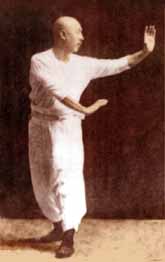
Baguazhang is one of the three main Chinese martial arts of the Wudang school, the other two being tai chi and xingyiquan. It is more broadly grouped as an internal practice. Baguazhang literally means "eight trigram palm", referring to the bagua "trigrams" of the I Ching, one of the canons of Taoism.

The Sun-style tai chi is one of the five primary styles of tai chi. It is well known for its smooth, flowing movements which omit the more physically vigorous crouching, leaping and fa jin of some other styles. Its gentle postures and high stances make it very suitable for martial arts therapy.
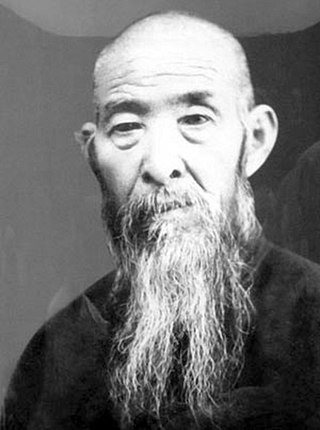
Sun Lutang (1860-1933) was a master of Chinese neijia (internal) martial arts and was the progenitor of the syncretic art of Sun-style tai chi. He was also considered an accomplished Neo-Confucian and Taoist scholar, and was a distinguished contributor to the theory of internal martial arts through his many published works.
Moy Lin-shin was a Taoist monk, teacher and tai chi instructor who founded the Taoist Tai Chi Society, the Fung Loy Kok Institute of Taoism and the Gei Pang Lok Hup Academy.

Cheng Tinghua (1848–1900) was a renowned master of Chinese neijia (internal) martial art baguazhang (bagua).

Hung I-Hsiang or Hong Yixiang (1925–1993) was a Taiwanese martial artist who specialized in the internal Chinese styles of xingyiquan, baguazhang, and taijiquan.

Vince Black was
a martial artist and doctor of Traditional Chinese Medicine. He specializes in the internal Chinese styles of xingyiquan and baguazhang.

Fu Zhensong, also known by his courtesy name Fu Qiankun, was a grandmaster of Wudangquan martial arts. He was best known as one of the famed "Five Northern Tigers," and a third-generation master of Baguazhang who founded Fu Style Baguazhang. He was also a soldier and a supporter of Sun Yat-sen.

Fu-style Wudangquan is a family style of Chinese martial arts encompassing tai chi, xingyiquan, baguazhang, liangyiquan, bajiquan, and Wudang Sword. Fu Style Baguazhang is one of the five styles of baguazhang recognized as orthodox in China. It is the highest form of the Fu-style martial arts.
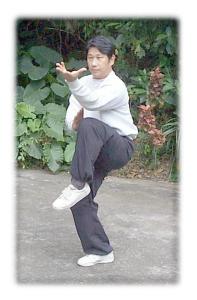
Luo Dexiu or Lo Te-Hsiu is a Taiwanese martial artist who specializes in the internal Chinese styles of Xingyiquan, Baguazhang, and Taijiquan.

Sam Masich is a tai chi instructor, performing songwriter and filmmaker residing in Vancouver, British Columbia, Canada and Berlin, Germany.
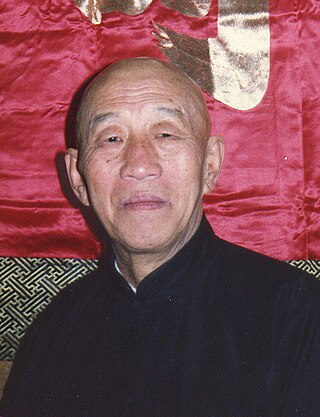
Kuo Lien-ying was one of the most distinguished and revered martial artists of the twentieth century. He brought the Guang Ping Yang tai chi to the United States.

Guang Ping Yang tai chi is a tai chi style descended from Yang-style tai chi. It claims to combine all the positive aspects of Yang-style with qualities that added strength and versatility. Its stances are lower and wider than Yang-style, but not as pronounced as Chen-style. Guang Ping is also distinguished by as little as a 51%/49% weight difference between leading and trailing foot in certain moves. A stronger, more balanced foundation gives the student more power and greater flexibility. Guang Ping Yang tai chi also combines Xingyiquan and Baguazhang energies, which can be seen in Guang Ping's spiral force energy and projecting force energy theories. It has become known as the "lost" Yang-style tai chi form.
Chu Guiting was a prolific martial artist who studied under the famous local masters, Jiang Yuhe, Yu Bingzhong, and Chen Delu, and went on to influence many different Chinese martial arts schools through his teaching.
Jiang Rongqiao was a famous martial artist from Hebei, China. His specialized focus on the internal arts led him to develop his own system of Bagua which became recognized and known as Jiang Style Baguazhang.
The Central Guoshu Institute was established in Nanjing by the Kuomintang government of the Republic of China in March 1928 for the propagation of Chinese martial arts, and was an important center of martial arts during the Nanjing decade. Guoshu "national art" was the term for martial arts adopted by the Republic of China at the time. The institute was created by Zhang Zhijiang under the sponsorship of elite government officials such as Li Liejun and others. Along with the Jing Wu Athletic Association, the academy played a crucial role in the transmission of traditional Chinese martial arts into the 20th century.

Wudangquan is a class of Chinese martial arts. In contemporary China, Chinese martial arts styles are generally classified into two major groups: Wudang (Wutang), named after the Wudang Mountains; and Shaolin, named after the Shaolin Monastery. Whereas Shaolin includes many martial art styles, Wudangquan includes only a few arts that use the focused mind to control the body. This typically encompasses tai chi, xingyiquan and baguazhang, but must also include bajiquan and Wudang Sword. Although the name Wudang simply distinguishes the skills, theories and applications of the internal arts from those of the Shaolin styles, it misleadingly suggests these arts originated at the Wudang Mountains. The name Wudang comes from a popular Chinese legend that incorrectly purports the genesis of tai chi and Wudang Sword by an immortal, Taoist hermit named Zhang Sanfeng who lived in the monasteries of Wudang Mountain. Wudangquan is often used synonymously with Neijia, but Neijia is a broader term that also encompasses Qigong, which is not Wudangquan.

Xingyiquan, or Xingyi, is a style of internal Chinese martial arts.
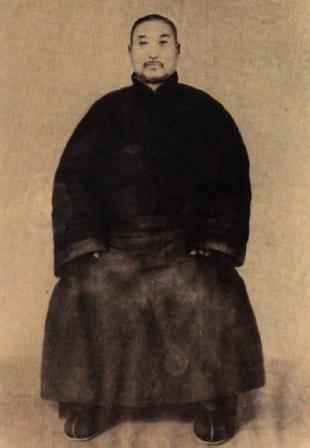
Shang Yunxiang (尚云祥), a.k.a. Shang Jiting (尚霁亭), was a renowned master of Xingyiquan in the late Qing Dynasty (1644–1911) and early Minguo. He was born in Leling City of Shandong Province, in 1864. He died at the age of 73 in 1937.

Wang Shujin (1904–1981), also known as Wang Heng Sun, was a Chinese martial artist, practitioner of the disciplines of baguazhang, taijiquan, and xingyiquan. He was one of their greatest promoters outside China, being their first teacher in Taiwan and Japan, and was particularly known for his challenges to other martial artists. Aside from his martial exploits, Wang was also a spiritual leader in the Taoist sect Yiguandao.